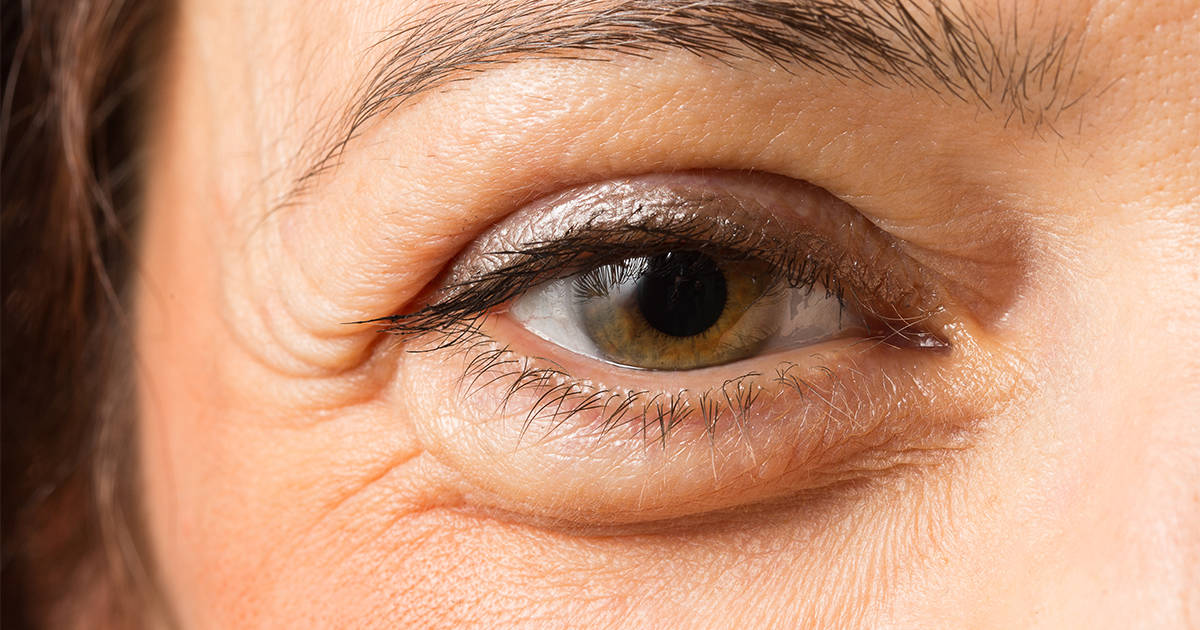Puffy eyes: How to get rid of swelling under the eye

Puffy eyes and dark circles under the eyes occur for many reasons, including inherited facial features, allergies, stress, eye fatigue and individual skin characteristics such as texture.
While certain home remedies such as cool cucumber slices may temporarily relieve puffy eyes, a more long-lasting solution depends on the underlying cause.
What causes puffy eyes?
Ordinary swelling around the eyes means you have an excessive accumulation of fluids, called oedema, in surrounding skin tissue. As the skin around the eyes is the thinnest skin in the body, swelling and discolouration can be quite prominent.
Why does fluid accumulate to form puffy eyes in the first place?
Puffy eyes generally result from a variety of factors, including:
Over consumption of salt, which causes fluid retention
Allergies that can cause inflammation and swelling
Sinus problems
Dehydration
Fatigue and lack of sleep
Stress
Crying
Ageing
Inherited facial features
While the last answer isn't very satisfying, it's true that many people have puffy eyes because this trait simply runs in the family.
With ageing, eye puffiness can be caused in part when fatty tissue that ordinarily protects the eye inside the bony eye socket begins to push forward and fill in spaces below the eye.
This happens because the ageing process cause thinning of the membrane or "septum" that ordinarily holds back fat in both the upper and lower eyelids. As the membrane thins, the fat herniates and pushes forward. This is when bags or bulges start forming under the eye.
What causes puffy eyes in the morning?
While we sleep, we don't blink and this is part of the reason why eye puffiness develops.

Dark circles can form under the eyes from stress or lack of sleep.
Blinking for eyelids is like walking for legs. When idle, some people develop swelling in their lower extremities that goes away as soon as they start walking and muscles in the legs begin "milking" the trapped fluids (oedema), which are released back into circulation.
A similar action takes place in the eyelids. During sleep the closed, non-blinking eyelids can potentially swell in certain people prone to this problem. So, in the mornings, you might wake up with unusually puffy, swollen eyelids. After you open your eyes and start blinking, some of this swelling can diminish in an hour or so.
Are puffy eyes a sign of a medical condition?
When they occur unexpectedly, swollen eyes sometimes signal an underlying medical problem.
For example, people with thyroid eye disease can develop swelling of tissue and muscles around their eyes. Also, bulging eyes can signal a thyroid disorder known as Graves' disease.
Eye allergies related to conditions such as hay fever can also produce swollen eyes. Other types of allergies, such as reactions to certain foods or chemicals, can also cause swollen eyelids.
During an allergic reaction, certain cells in the body release a chemical called histamine that has many adverse effects on body tissues, including fluid leakage from the blood vessels. These fluids become trapped in surrounding tissues, causing oedema.
Puffy, swollen eyelids and dark circles under the eyes can occur when you have an eye infection such as conjunctivitis. These swollen eyes are caused by inflammation associated with the eye infection, which directly affects the neighbouring eyelids. Also, dry eyes can cause general puffiness and swelling.
Systemic diseases including kidney failure can also lead to general swelling throughout the body, including around the eyes.
What are some treatments for puffy eyes?
To find the best solution for puffy eyes and dark circles, it's important to identify the underlying cause.
If your mother or father has puffy eyes, you may have inherited the trait from them. In this case, you could consider cosmetic surgery to reduce the puffiness.
Puffy eyes caused by ageing would also probably require a cosmetic solution.
You might want to discuss with your optometrist or a plastic and cosmetic surgeon some of the available options to address your eyelid concerns. These options include chemical peels, laser skin resurfacing procedures, certain prescription skin products and eyelid surgery known as blepharoplasty.
Blepharoplasty involves removing extra fatty tissue and excessive skin from upper and lower eyelids, as well as tightening skin and muscles to reduce puffiness and wrinkles.
Many temporary remedies can help reduce the swollen look around eyes, such as:
Using eye drops for irritation caused by allergies, if appropriate
Drinking ample fluids to prevent dehydration
Applying iced compresses when your lids are swollen
Applying cucumber slices or chilled tea bags over closed eyes
Using creams and other skin products specially formulated for use around the eyes
Reducing salt in your diet
Eating potassium-rich foods, such as bananas, to eliminate excess fluids in your body
Splashing cold water over your face and eyes or using ice packs and cold compresses
Getting plenty of sleep and rest
Creams and ointments used to reduce puffiness in eyelids often contain phenylephrine — a medication that constricts blood vessels, reducing their diameter. This can have a potential dual effect on puffy eyelids.
First, if dark circles are caused by a visible network of blood vessels under the thin eyelid skin, then making the vessels smaller might reduce the darkness.
Second, constricting the blood vessels could reduce the potential for leakage of fluid from within the blood vessel, and this might reduce puffiness.
However, be careful when applying these products around your eyes. If you accidentally get them in your eye, you can experience a severe inflammatory response known as chemical conjunctivitis. If this occurs, see your optometrist immediately.
Page published on Monday, 16 March 2020






